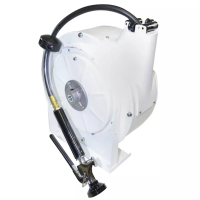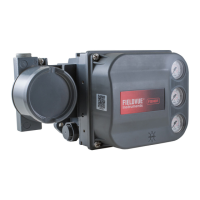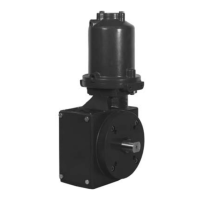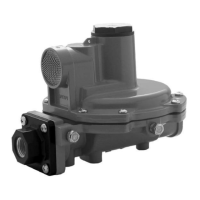5-20
Configuration
Discrete
FCODE 103 Options
output
1 2 3 4 5
DO3
L - L H* LL*
DO4 H H - HH* L’
l
DO3 and DO4 are mutually exclusive. Only one alarm at a time is
indicated. For example, when DO4 goes on DO3 goes off.
Set the low alarm limit using FCODE 3 and the high alarm limit via
FCODE 4.
Function Parameters
Process Limit 1
V&le Limit 2
Alarm
Limits
FCODE Range Unit Increment Default Selected
V&B?
V.he
3 MS3.5.
any
1 digit Min
4 Range
any
1 digit Max
The digital display indicates a lower limit alarm for the LOW,
HIGH/LOW, or LOW/LOW FCODE 103 options by an L that flashes to
the left of the displayed value.
For FCODE 103 HIGH, LOW, and HIGH/LOW options, the display
indicates a higher limit alarm by a flashing H or L to the left of the
displayed value.
When the user configures HIGH/HIGH or LOW/LOW alarms the
display indicates the second high alarm or the second low alarm by
an H or L that flashes faster (2X) than the normal alarm display.
Recall that the PV bargraph shows the configured alarm limits by
brighter bars. However, it is possible to set limits outside the area
shown by the bargraph that will set off an alarm if they are exceeded.
The alarms may be sent out via discrete output D03, for lower
alarms, and DO4 for higher alarms if DO3 and DO4 are not
configured to carry process value alarms, setpoint deviation alarms,
setpoint ramping, or is configured to monitor sensor status. The
alarms have a hysteresis of 1 percent of the configured range.
Both high and low alarm limits may be set, but
only one at a time is active if FCODE 103 is set to
Option 2 or 3. When FCODE 103 Options 4 and 5
are configured, the two alarm limits become
high/high or low/low limits.
iJM61:DPFWO0:9147 Change 2 -July 7992
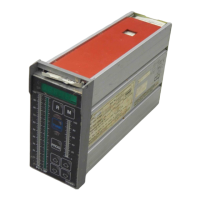
